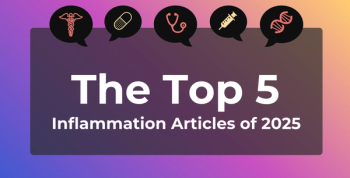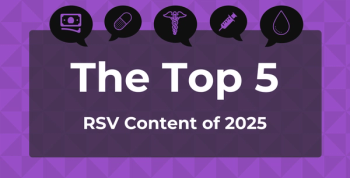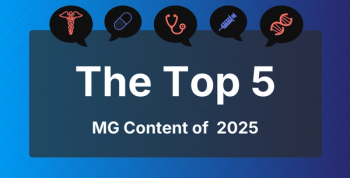
POLY-HF: Polypill Boosts Heart Function, Adherence in Heart Failure
Key Takeaways
- The polypill improved left ventricular ejection fraction, reduced hospitalizations, and enhanced quality of life in HFrEF patients over six months.
- The trial addressed polypharmacy challenges, showing higher adherence and optimal dosing with the polypill compared to separate medications.
Combining 3 standard therapies into a single pill improved outcomes for adults with heart failure with reduced ejection fraction.
A once-daily polypill containing 3 guideline-directed therapies for
The polypill contains metoprolol succinate, a β-blocker; spironolactone, a mineralocorticoid receptor antagonist (MRA); and empagliflozin, a sodium-glucose cotransporter 2 inhibitor (SGLT2i).
The phase 2 POLY-HF randomized controlled trial (
“Heart failure is a serious condition that leads to frequent hospitalization and high risk of mortality,” Ambarish Pandey, MD, MS, FAHA, associate professor of internal medicine at UT Southwestern Medical Center and presenting author of the study, said at AHA 2025. “Four specific therapies have been shown to reduce mortality and cardiovascular hospitalizations and are the pillars of management of HFrEF. But the challenge has always been in implementation, and only 15% of patients with HFrEF actually get all the therapies.”
Simplifying Guideline-Directed Medical Therapy
The 4 pillars of HFrEF management include angiotensin receptor-neprilysin inhibitors (ARNIs), β-blockers, MRAs, and SGLT2is. However, older patients are at a much higher risk of
The POLY-HF trial enrolled 212 adults with HFrEF—defined as LVEF ≤ 40%—who were not receiving target doses of guideline-directed medical therapy (GDMT).1 Participants were randomly assigned to receive either the once-daily polypill or the same classes of medication as 3 separate pills.
Both groups also continued taking the ARNI sacubitril/valsartan, which was not included in the polypill due to its twice-daily dosing schedule. Participants were followed for 6 months, with cardiac magnetic resonance imaging used to measure changes in LVEF. Secondary outcomes included quality of life, hospitalizations, ED visits, and medication adherence.
At 6 months, participants who received the polypill demonstrated greater improvement across every major outcome compared with those who received standard care. These patients saw their LVEF improve by 3.4 percentage points more (P = .024) and had 60% fewer hospitalizations or ED visits for heart failure. Quality of life scores on the Kansas City Cardiomyopathy Questionnaire were 8 to 9 points higher among those taking the polypill, indicating less fatigue and fewer symptoms, and therapeutic drug testing also showed fourfold greater odds of adherence in the polypill arm. By the end of 6 months, 71% of participants receiving the polypill were on optimal doses of all 4 classes of GDMT, compared with 42% in the enhanced usual-care group.
Majority of Participants Came From Underserved Populations
What sets this study apart from many in the cardiovascular field is the diverse patient population—about 54% of participants were Black and 33% were Hispanic, with 20% primarily speaking Spanish. When The American Journal of Managed Care® (AJMC®) asked Pandey what other trialists could learn from his recruitment methods, he said it all comes down to trust and representation.
POLY-HF was conducted across 2 centers, including a safety-net hospital where nearly 70% of participants were uninsured or had county-sponsored coverage. Because his team included members fluent in Spanish and from the same communities, they were able to better connect with and recruit patients across the Dallas, Texas, area.
“Having team members who are from their background and being part of the clinical team that took care of these patients did help us have the trust and the rapport with the patients to enroll them,” Pandey told AJMC. “Because the burden of polypharmacy and because of the lack of being able to take GDMT is much higher and disproportionately greater in that population, we felt it was important to have the right representation of patients who bear the brunt of the polypharmacy-related nonadherence. We were happy that we were able to represent that population in our trial.”
The mean age was 53.5 years in both groups. It’s important to note only 22% of participants were women, which limits the generalizability of these findings based on sex. Pandey and his team are already working toward the next round of multicenter research.
“As for next steps, we are planning to do a longer follow-up and a multicenter trial for assessing the long-term benefits of a polypill-based approach on the risk of meaningful clinical endpoints of mortality and heart failure hospitalization,” Pandey explained. “We also plan to undertake cost effectiveness studies and implementation studies that can facilitate the uptake and scaling of this intervention to improve guideline-directed therapy use in this population.”
References
- Pandey A. A polypill strategy for heart failure with reduced ejection fraction: the POLY-HF trial. Presented at: AHA 2025 Scientific Sessions; November 10, 2025; New Orleans, LA.
- Klein HE. Improving patient-centered cardiovascular care for older adults. AJMC. November 8, 2025. Accessed November 10, 2025.
https://www.ajmc.com/view/improving-patient-centered-cardiovascular-care-for-older-adults
Newsletter
Stay ahead of policy, cost, and value—subscribe to AJMC for expert insights at the intersection of clinical care and health economics.







































